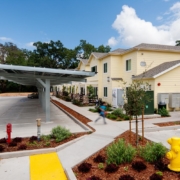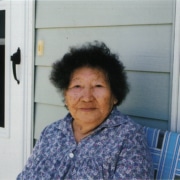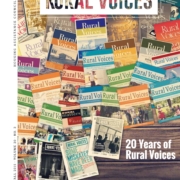News Formats. pdf
Feburary 6, 2020
Vol. 49, No. 3
February is National African American History Month • Rental affordability crisis continues, research confirms • Surpreme Court allows public charge rule to block immigrants who use public assistance • AARP offers small grants for short-term projects including housing • USDA sets 2020 loan limits for Section 502 direct loan program • Bill would create New Market Tax Credit set-aside for Native lands • House members release infrastructure ideas • House to vote on Puerto Rico emergency funding • Hearings examine threats to children posed by Administration regulatory proposals • Boosting EITC Awareness • Iowa Seniors Face Dilemma of Aging Far from Home • Multidimensional Index of Deep Disadvantage • Strong Foundations: Financial Security Starts with Affordable, Stable Housing • HAC Seeks Executive Assistant and Senior Portfolio Manager • SAVE THE DATE FOR HAC’S 2020 RURAL HOUSING CONFERENCE! • HAC offers Section 512 packaging training for nonprofits, March 10-12 in Virginia • Need capital for your affordable housing project?
HAC News Formats. pdf
February 6, 2020
Vol. 49, No. 3
February is National African American History Month.
Rental affordability crisis continues, research confirms.
Almost 40% of rural renters nationwide were cost burdened in 2018, according to America’s Rental Housing 2020, a report by Harvard University’s Joint Center for Housing Studies. Nationwide, the number of cost-burdened renters (those paying over 30% of income for rent and utilities) fell from 2014 to 2017 but rose again in 2018. Among geographic and income categories, the only decline in cost-burden rates from 2011 to 2018 was a 0.9% drop for nonmetro renters with incomes of $30,000-44,999. The report notes that, in addition to cost burden, rural rental housing issues include limited rental stock, substandard housing and (citing HAC’s research) the loss of Section 515 properties. Interactive data and graphics and the written report are available online.
Supreme Court allows public charge rule to block immigrants who use public assistance.
In August 2019 the Department of Homeland Security published a final rule establishing strict standards for determining that an immigrant is not likely to become a “public charge” and is therefore eligible to live in the U.S. (Some categories of immigrants, such as refugees, are exempt from the regulation.) Lawsuits were filed challenging the regulation, and a federal court issued an injunction preventing it from taking effect while the litigation was underway. DHS asked the Supreme Court to lift the injunction and on January 27, by a 5-4 vote, the court did. Litigation will continue in lower courts, but at the same time the rule will take effect on February 24 across the U.S. except in Illinois, where it is suspended because of a different court decision.
AARP offers small grants for short-term projects including housing.
The AARP Community Challenge provides small grants to nonprofits and government entities for “quick-action” projects that can help communities become more livable for people of all ages. Improvements in housing, transportation, civic engagement and other areas are eligible. Applications are due April 1. For more information, contact communitychallenge@aarp.org.
USDA sets 2020 loan limits for Section 502 direct loan program.
The maximum amounts for homebuyers’ Section 502 direct mortgage loans vary from county to county. Updated limits that took effect on January 31 are posted online and have been added to the online eligibility assessment tool.
Bill would create New Markets Tax Credit setaside for Native lands.
A new Senate bill aims to allocate at least 10% of the New Markets Tax Credit program to Native American, Alaskan or Hawaiian Community Development Financial Institutions and other entities. Senators Lisa Murkowski (R-AK), Dan Sullivan (R-AK), Brian Schatz (D-HI), and Mazie Hirono (D-HI) introduced S. 3181, called the Inspiring Nationally Vibrant Economies Sustaining Tribes (INVEST) Act. The legislation also includes a pilot program for technical assistance to Native institutions applying for NMTC allocations.
House members release infrastructure ideas.
Members of the House Transportation and Infrastructure Committee took different approaches in infrastructure proposals issued in late January. Reps. Sam Graves (R-MO) and Rodney Davis (R-IL) listed general principles related to surface transportation, including an assurance that rural areas must be treated fairly. Transportation Committee chair Peter DeFazio (D-OR) joined with the chairs of two other committees to release a more detailed framework calling for a $760 billion investment over five years in broadband, water, energy, transportation and communications infrastructure. It includes unspecified expansions of the Low-Income Housing Tax Credit and the New Markets Tax Credit.
House to vote on Puerto Rico emergency funding.
The House is expected to vote February 7 on H.R. 5687, which would provide $4.67 billion for Puerto Rico following recent earthquakes there. If the House approves it, the bill will then need to clear the Senate. The White House has threatened a veto, however.
Hearings examine threats to children posed by Administration regulatory proposals.
On February 5 and 6 the House Committee on Oversight and Reform held four hearings on “threats to America’s children” from changes the Administration has proposed in regulations governing affirmatively furthering fair housing, poverty calculations, SNAP eligibility and air quality standards. Recordings and written witness statements are available online.
Recent publications and media of interest
- Boosting EITC Awareness is a blog post about the Earned Income Tax Credit, a refundable tax credit for low- and moderate-income wage earners. Published by the Center on Budget and Policy Priorities, the post includes links to tools such as an online EITC eligibility checker and a summary of research about the benefits of the EITC and other refundable tax credits.
- Iowa Seniors Face Dilemma of Aging Far from Home describes the need for senior living and services in rural Iowa. Relying on sources that include HAC, the article also offers solutions from rural places across the country.
- Multidimensional Index of Deep Disadvantage, a new index from the University of Michigan, uses data on income, health and social mobility to identify areas of deep disadvantage in the U.S. and hopes to increase the attention these places receive. Eighty of the 100 most disadvantaged communities are in rural areas. The index’s map is strikingly similar to HAC’s map of persistent poverty counties, which fall largely in predominantly rural areas and populations: Central Appalachia, the Lower Mississippi Delta, the southern Black Belt, the colonias region along the U.S. Mexico border, Native American lands and migrant and seasonal farmworkers.
- Strong Foundations: Financial Security Starts with Affordable, Stable Housing, a research primer by The Aspen Institute, concludes that housing affordability and stability are universal concerns. It also highlights the rural realities, including constricted mortgage financing, inconsistent and costly infrastructure and lower quality housing.
HAC is hiring.
HAC is an equal opportunity employer and lender.
- The Executive Assistant supports the work of HAC’s CEO and Board of Directors. Based in Washington, DC, the position is a blend of administrative work and project assignments for an early–career professional. The candidate will manage the CEO’s calendar, organize meetings, plan events and make travel arrangements while working on special initiatives and assignments as the candidate grows into a career in policy, program administration or nonprofit management. Email a resume and brief cover letter to jobs@ruralhome.org with “Executive Assistant” in the subject line. Applications will be considered as received.
- The Senior Portfolio Manager provides leadership and oversight to a team that performs a range of lending activities – closing, disbursement, monitoring, servicing and asset management of single-family and multifamily housing development loans – in HAC’s Loan Fund Division, based in Washington, DC. Email a resume and brief cover letter to jobs@ruralhome.org with “Senior Portfolio Manager” in the subject line. Applications will be considered as received.
SAVE THE DATE FOR HAC’S 2020 RURAL HOUSING CONFERENCE!
The conference will be held in Washington, DC on December 2-4, 2020 with pre-conference meetings on December 1. The HAC News will announce more details, including registration, as they become available.
HAC offers Section 502 packaging training for nonprofits, March 10-12 in Virginia. This three-day advanced course trains experienced participants to assist potential borrowers and work with RD staff, other nonprofits and regional intermediaries to deliver successful Section 502 loan packages. The training will be held in Glen Allen, VA on March 10-12. For more information, contact HAC staff, 404-892-4824.
Need capital for your affordable housing project? HAC’s loan funds provide low interest rate loans to support single- and multifamily affordable housing projects for low-income rural residents throughout the U.S. and territories. Capital is available for all types of affordable and mixed-income housing projects, including preservation, farmworker, senior and veteran housing. HAC loan funds can be used for pre-development, site acquisition, site development and construction/rehabilitation. Contact HAC’s loan fund staff at hacloanfund@ruralhome.org, 202-842-8600.
Please note: HAC is not able to offer loans to individuals or families. Borrowers must be nonprofit or for-profit organizations or government entities (including tribes).





